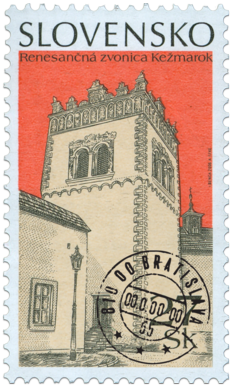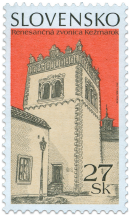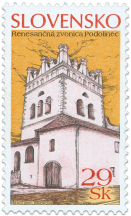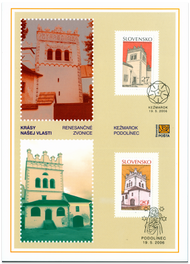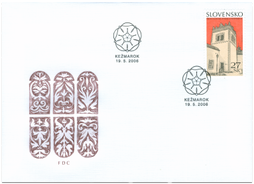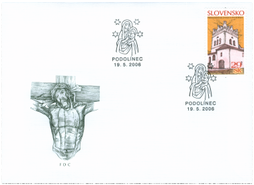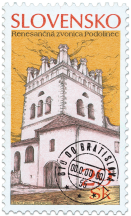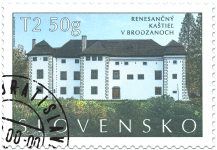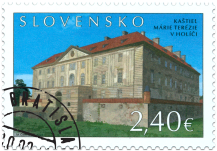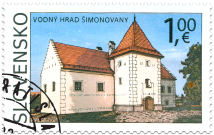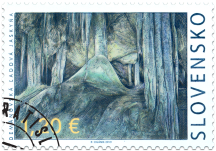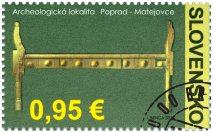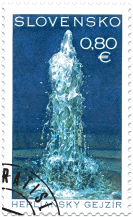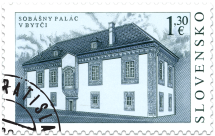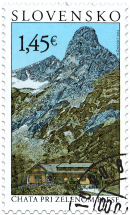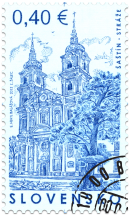376 Date of issue
19.05.2006 Face value
27.00 Sk Sell price
0.46 €
© Slovak post, 2006 It was mainly the towns of Eastern Slovakia which participated in the development of Renaissance architecture in Slovakia from the middle of the 16th century. The social and political conditions following the defeat of Hungarian troops by the Turks at Moháč in 1526 and the onset of the Reformation paved the way to the Renaissance. It was in the towns of the Spiš region (German: Zips) where the Renaissance impacted stronger in comparison with other regions. The mutual interaction of the native traditions with the architecture of southern Poland (with its center in Cracow) contributed to the development of the unique style called East-Slovak Renaissance. Typical Renaissance structures in Eastern Slovakia also include belfries. These stand-alone structures with their characteristic gable-attics are unique in Europe. Although belfries were usually built within church-areas, they were not actually used for church purposes. Rather, towns used them as watchtowers and observation bases, raising alarm of imminent threats such as fire, other forces of nature, or military attack. The belfry in Kežmarok, in the closed area of the Holy Cross parish-church, is one of the most beautiful sights in the Spiš region. Its designer was the local architect Ulrich Materer, who built in the period 1586 – 1591. This rather small structure with a square-shaped ground plan didn’t actually exceed the surrounding buildings by its elevation. Typical for its clear composition is the striking horizontal division of the areas. The elevated ground-floor is smooth and fitted with an entry opening. The slightly salient storey (resting on arch-like consoles) is on all four sides architectonically accentuated by arcade openings (biforium and triforium type). The entire structure ends in a gable-attic. An important role in the structure's overall composition is played by the extensive sgraffito decoration by an unknown author with the initials H.B. The motif presented on the FDC shows a detail of the styled botanic ornament constituting the blind sgraffito arcature beneath the attic. PhDr. Jadwiga Lacková
Show less© 2024 POFIS - Postal philatelic service. All rights reserved

